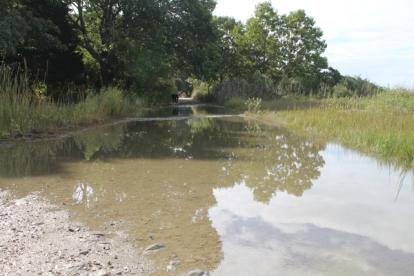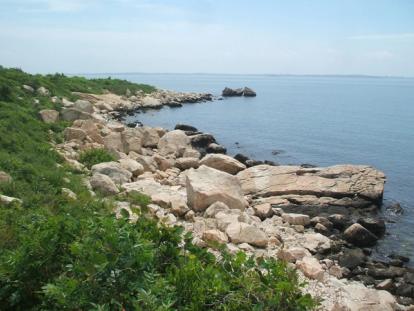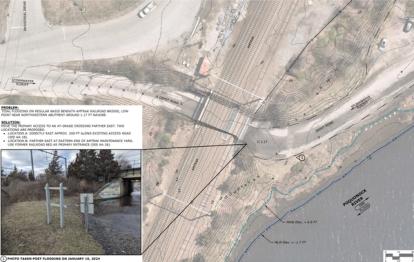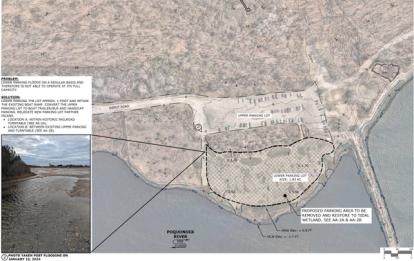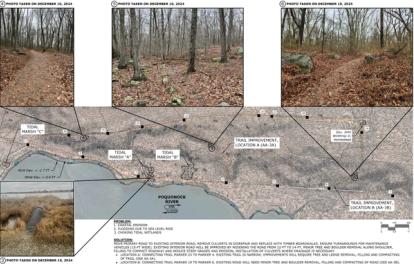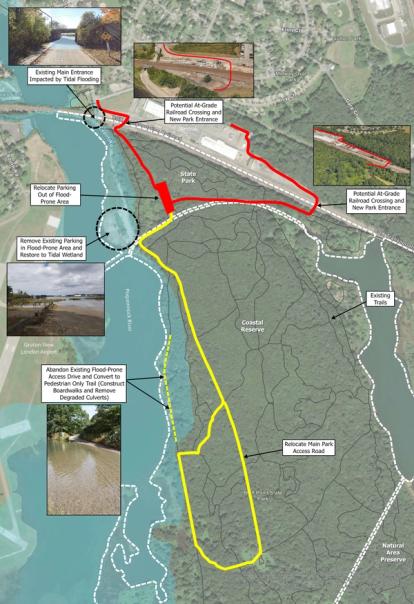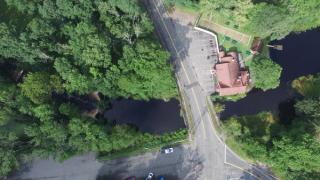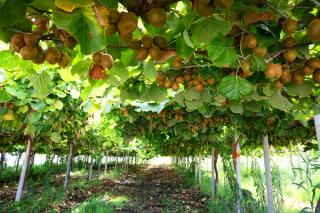
Formulating a Site Plan to Support the Ecology and Management Needs of the Bluff Point Properties, in Groton CT
- Client Name
- Connecticut National Estuarine Research Reserve
- Location
- Groton, Connecticut, USA
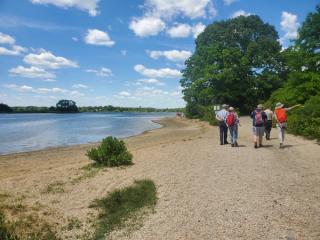
Challenge
Bluff Point is the largest undeveloped wooded coastal peninsula between New York and Cape Cod, located in Groton, Connecticut. The park is made up of over 800 acres and is bounded by the Poquonnock River on the west, Mumford Cove on the east, and Fishers Island Sound to the south. The Property contains three state-owned resources: Bluff Point State Park, Bluff Point Coastal Reserve, and Bluff Point Natural Area Preserve. These three resources are often colloquially referred to collectively as “Bluff Point State Park,” but for the purpose of this project, are referred to as the “Bluff Point Property,” or “the Property.”
As part of the CTNERR, the Bluff Point Property provides an important ecological resource for the State of Connecticut as well as Long Island Sound. The property includes a variety of coastal habitats, including coastal forest, beach and dune, grassland, coastal plain pond, coastal bluff, tidal wetlands, intertidal mudflats, eelgrass beds, and back-beach sandflat. More than 200 bird species are found on Bluff Point, including various herons, hawks, cormorants, and federally threatened piping plover. The park boasts annual visitation of almost 500,000 parkgoers who value the biodiversity, natural beauty, and recreational opportunities afforded by the park.
As a coastal property, the impacts of climate change and sea level rise on the services and ecological resources at Bluff Point present an opportunity for restoration activities, coastal training, and environmental education. In alignment with the research, stewardship, training, and outreach goals of CTNERR, the focus of this project was for SLR to evaluate the existing conditions at the park relative to coastal erosion and wetland habitat stability, identify potential restoration areas, prepare conceptual mitigation ideas for each restoration area, and present the potential projects to the public and other stakeholders for input on restoration projects and improve understanding of public use and access priorities.
Solution
After successfully securing grant funding, SLR developed a comprehensive evaluation of the Bluff Point Property, focusing on habitat restoration, infrastructure, shoreline stabilization, ecological conditions, and opportunities to increase environmental stewardship. Throughout the project process, SLR facilitated coordination between project partners including CTNERR, UConn, the Connecticut Department of Energy and Environmental Protection, and the Connecticut State Historic Preservation Office.
SLR prepared a survey to be distributed to parkgoers and the general public, aiming to solicit input on access, use, and climate-related observations and challenges at the Bluff Point property. CTNERR had communicated a goal of 200 survey responses. SLR analyzed the 640 responses gathered from the survey distribution efforts and presented the key findings to the CTNERR project team. The public survey and a site walk conducted by SLR informed the identification of restoration areas and subsequent public engagement tasks.
To understand the public’s vision for the future of the property and how to best integrate public benefits into restoration activities, SLR developed and facilitated two public meetings. At the engagement events, SLR presented the key findings from the survey and potential restoration areas, followed by interactive sessions to solicit additional feedback regarding access, use, challenges, and priorities or considerations for proposed resilience projects. There were 50 attendees at the in-person event and 38 at the virtual meeting.
SLR created an overall master plan map of the park using compiled datasets and information collected through public engagement efforts. The maps identified the restoration areas, which SLR further displayed through high-level concept designs.
Excerpts from SLR's Bluff Point Reserve Restoration Plan Concepts & Alternatives Analysis
Impact
SLR secured the initial grant to conduct the Resilience Planning project at Bluff Point, and the completion of this effort has informed additional grant proposals and opportunities pursued by CTNERR. The memorandum summarizing feedback from the survey and public meetings, as well as the concept designs prepared by SLR, will be extremely useful in developing grant applications to continue advancing the project and subsequent implementation phases.
